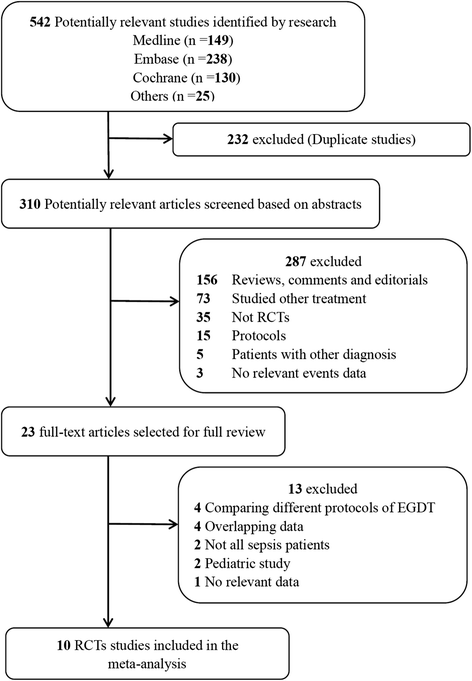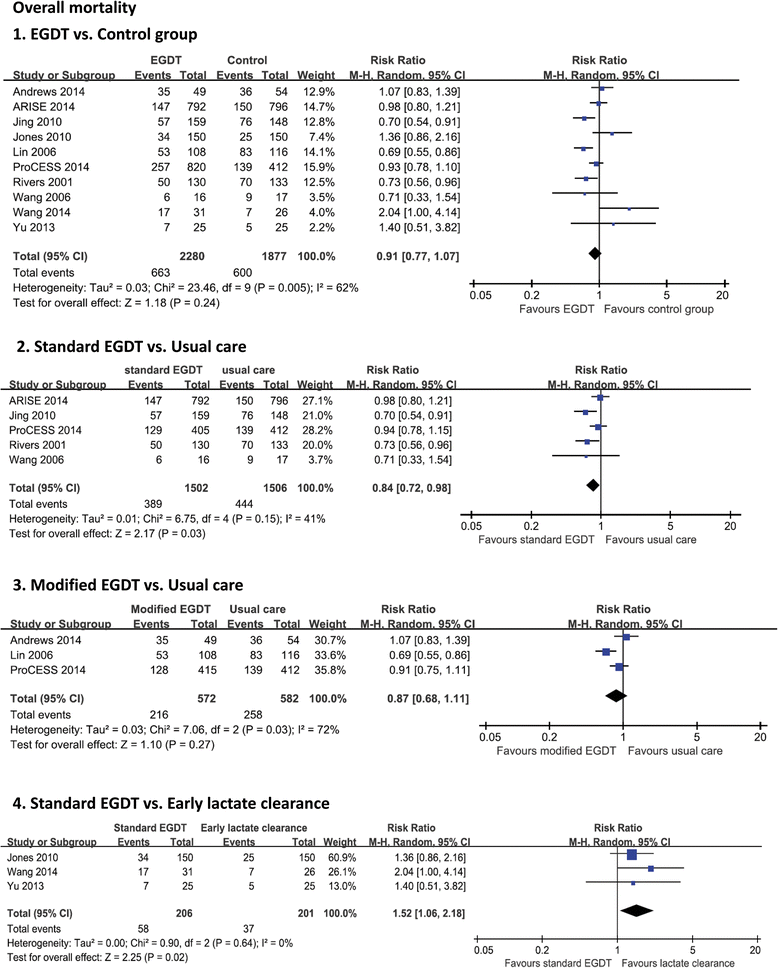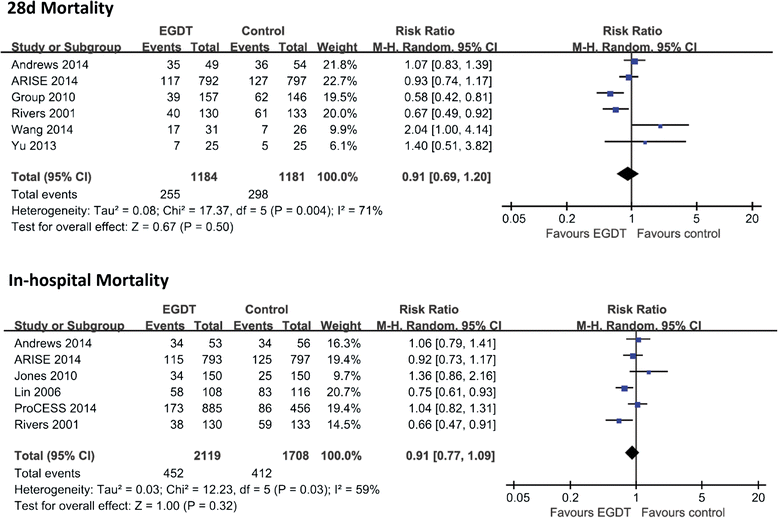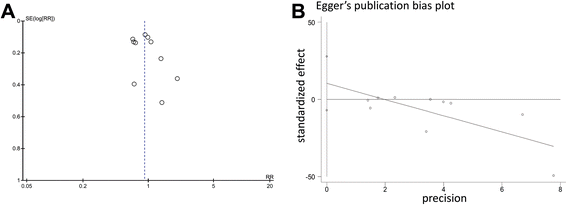Early goal-directed therapy in the management of severe sepsis or septic shock in adults: a meta-analysis of randomized controlled trials
- PMID: 25885654
- PMCID: PMC4393610
- DOI: 10.1186/s12916-015-0312-9
Early goal-directed therapy in the management of severe sepsis or septic shock in adults: a meta-analysis of randomized controlled trials
Abstract
Background: The Surviving Sepsis Campaign guidelines have proposed early goal-directed therapy (EGDT) as a key strategy to decrease mortality among patients with severe sepsis or septic shock. However, its effectiveness is uncertain.
Methods: We searched for relevant studies in Medline, Embase, the Cochrane Library, Google Scholar, and a Chinese database (SinoMed), as well as relevant references from January 1966 to October 2014. We performed a systematic review and meta-analysis of all eligible randomized controlled trials (RCTs) of EGDT for patients with severe sepsis or septic shock. The primary outcome was mortality; secondary outcomes were length of ICU and in-hospital stay, mechanical ventilation support, vasopressor and inotropic agents support, fluid administration, and red cell transfusion. We pooled relative risks (RRs) or weighted mean differences (MDs) with 95% confidence intervals (95% CI) using Review Manager 5.2.
Results: We included 10 RCTs from 2001 to 2014 involving 4,157 patients. Pooled analyses of all studies showed no significant difference in mortality between the EGDT and the control group (RR 0.91, 95% CI: 0.79 to 1.04, P = 0.17), with substantial heterogeneity (χ2 = 23.65, I (2) = 58%). In the subgroup analysis, standard EGDT, but not modified EGDT, was associated with lower mortality rate in comparison with the usual care group (RR 0.84, 95%CI: 0.72 to 0.98, P = 0.03). However, EGDT was associated with a higher mortality rate in comparison with the early lactate clearance group (RR 1.52, 95% CI: 1.06 to 2.18, P = 0.02). In the first 6 h, compared with usual care, patients in EGDT received more inotropic agents (P = 0.04), fluid administration (P = 0.05), and red cell transfusion (P < 0.01). There were no significant differences in length of ICU stay (P = 0.73) or in-hospital stay (P = 0.57), ventilation rate (P = 0.53), and vasopressor support (P = 0.63).
Conclusions: EGDT was not associated with a survival benefit among patients with severe sepsis or septic shock. Instead, EGDT was associated with a higher mortality rate in comparison to the early lactate clearance group. Further high-quality RCTs comparing EGDT with early lactate clearance are desirable.
Figures





References
Publication types
MeSH terms
LinkOut - more resources
Full Text Sources
Other Literature Sources
Research Materials
Miscellaneous

